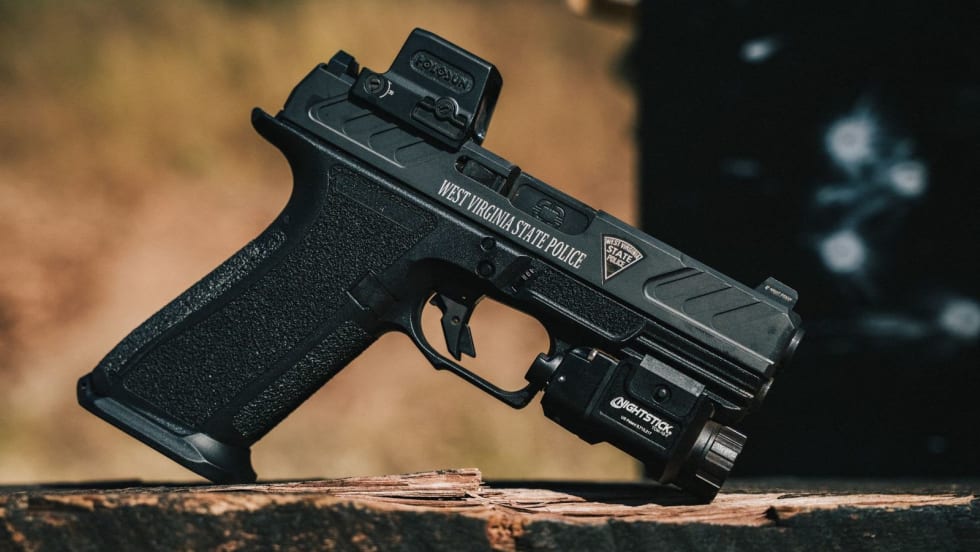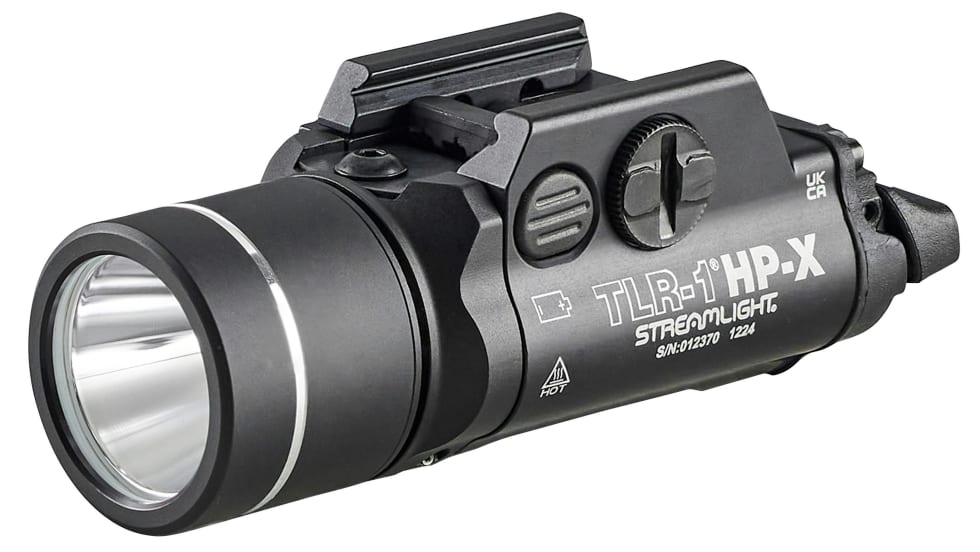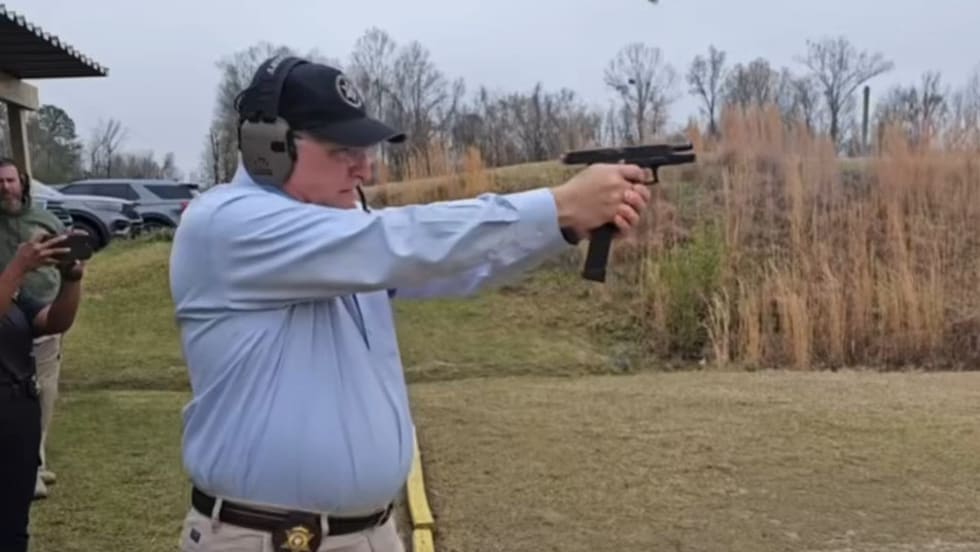I have to agree with Kimber's ammo choices. I tested the gun with all three. Groups were just at or less than three inches at 25 yards when fired from a well sandbagged rest.
But the Solo seemed to like the Hornady TAP 147 grain the best, resulting in a 2.5-inch group. Considering the gun's 2.67-inch barrel, its 4.9-inch sight radius, and its 7-pound trigger pull, that was pretty impressive.
Considering the number of personal injury lawyers out there just waiting to mine your agency's general fund, a 7-pound trigger pull is about normal for a duty pistol these days. But this trigger is somewhat unique in that it's preloaded to 88.6 percent. That means the trigger pull is constant throughout the length of travel. It feels more like a 4-pound pull because there's no stacking at all.
The sights are substantial. Both the front and rear sights are dovetailed into the slide. Windage can be adjusted by drifting the rear sight left or right. Three-dot sights are standard; however, they are not night sights. (Note to Kimber: make night sights available for the Solo Carry as soon as possible. Most gunfights cops get into are at night or in low light. We need them.)
While shooting 147-grain premium 9mm ammo in a 17-ounce gun isn't what most folks would call a barrel of fun, I was surprised at how well the recoil impulse was mitigated due to the gun's design. The grip angle is the same as most 1911s, SIGs, S&Ws, and Berettas, leaving the wrist in a neutral position. The line of the bore rides very low when gripping the gun. Both of these design features minimize perceived recoil and reduce muzzle flip, allowing easy reacquisition of the target through the sights and fast follow-up shots.










